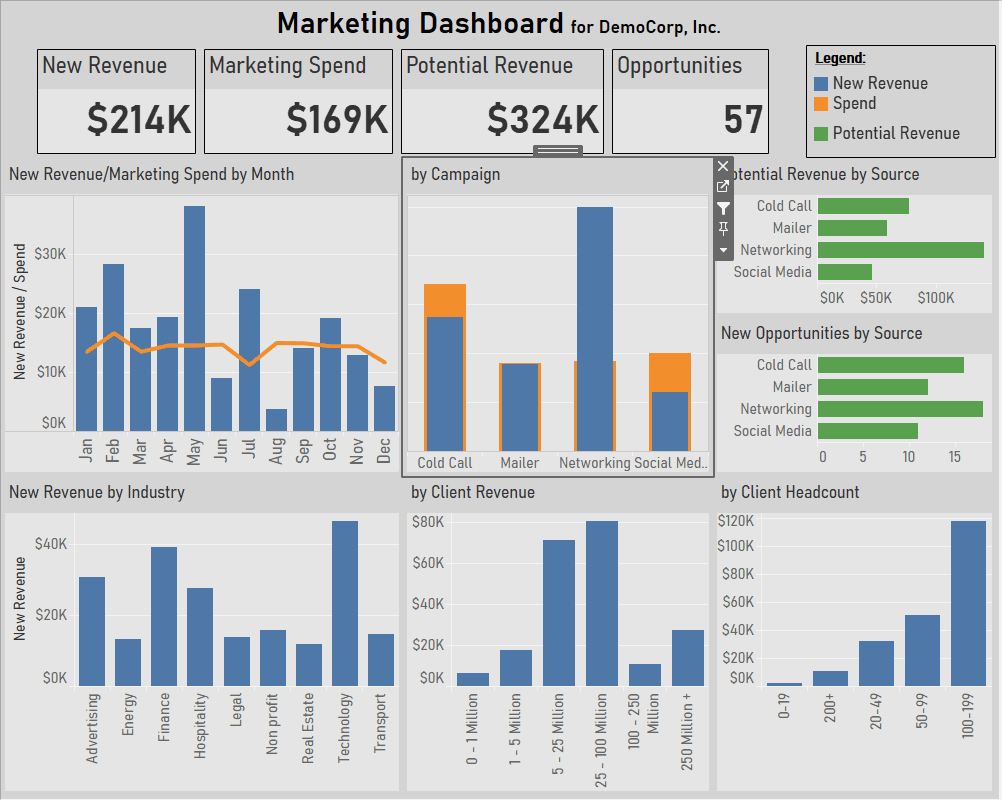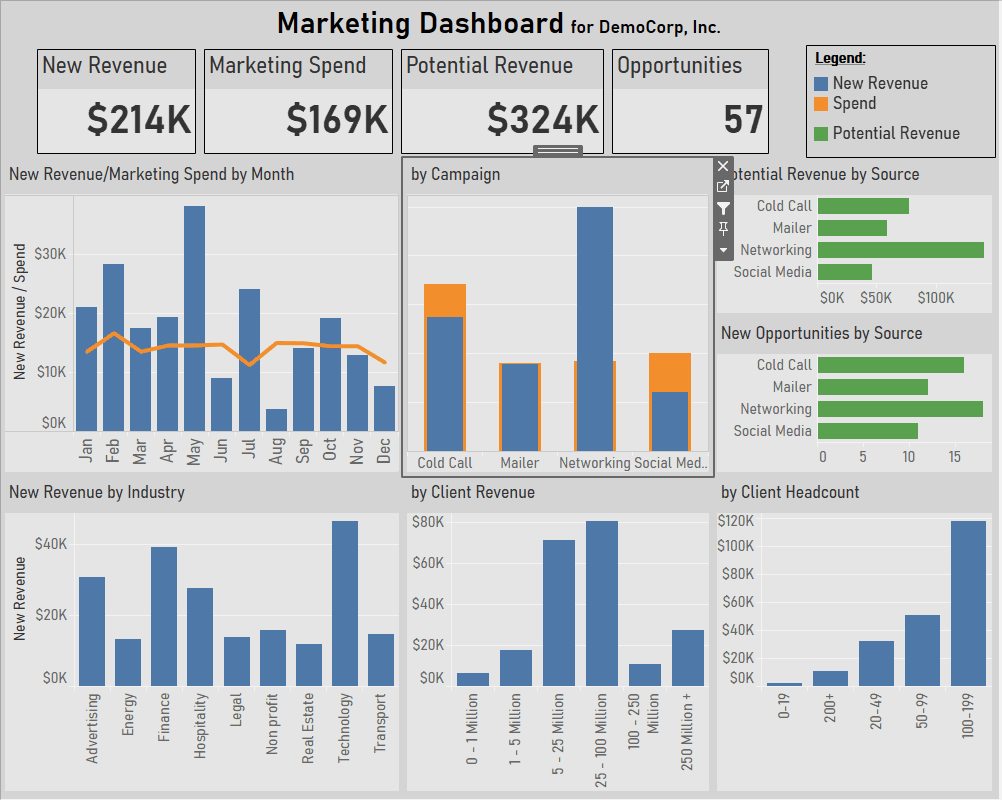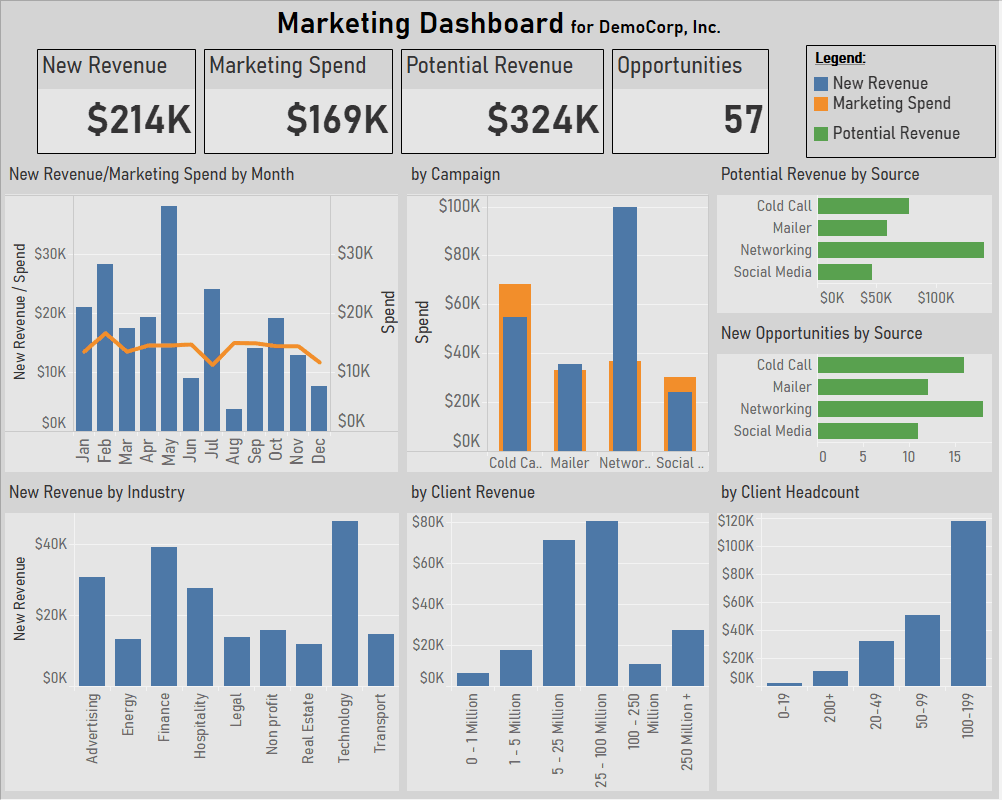Uncover Elusive Insights with Business Intelligence
In last week’s blog post, we discussed how successful companies leverage Business Intelligence (BI) to quickly and easily gain new insights into their organizations in order to make better decisions. This week, we will show some examples of such insights.
Using our fictional DemoCorp, Inc. as a case study, we will explore the performance and results of its marketing department. The dashboard is available at Tableau Public if you wish to follow along.
Background
In recent years, DemoCorp has struggled to create a sustainable buzz around its key products, and the decision was made one year ago to make investments and track results in four types of marketing campaigns: Cold Calling, Mailers, Networking, and Social Media. By incorporating the data into a BI system, the marketing team and executive leadership were able to uncover several actionable insights.
Discovery
Insight #1: Networking was by far the best performer
From the “New Revenue by Campaign” bar chart, you can see that new revenue brought in from networking efforts was substantially larger than any of the other three. Furthermore, if you click on the bar for Networking campaign you will see that each of the other components of the dashboard will filter out the unselected campaigns.

Now you can see the specific Key Performance Indicators (KPI) at the top as well as the distribution of new business by month or by client demographic that only pertain to the Networking campaign.
Insight #2: Cold Calling was not profitable
You will also notice from the orange “Spend” bar that Cold Calling, while the source of the second most revenue, was not profitable over the course of the year.

Does this mean that all cold calling efforts should be scrapped? Perhaps, but let’s investigate further. By selecting the Cold Call campaign, we can see that certain industries (Advertising, Finance, and Hospitality) of certain sizes (5 – 100 Million dollars in annual revenue) appear to be more receptive to DemoCorp’s cold calling efforts. This may warrant additional analysis. If there is a detailed data set of cold calls, it would be interesting to see if focusing efforts on those target demographics would make cold calling profitable.
Insight #3: Social Media and Mailer campaigns performed better in the first half of the year
Drilling into data-points is not limited to a single selection. For example, if you were to lasso around January through June in the “New Revenue/Marketing Spend by Month” pane, you can see that the other aspects of the dashboard are now displaying information about the first half of the year only.

One of the more telling insights gained by this view is to see that the Social Media and Mailer campaigns, performed better in the first half of the year than the second. Social Media was actually profitable in the first half but losses in the second half overtook the first half profits. Is this just a statistical variance? Is this a trend that can be expected going forward? Unfortunately there does not appear to be enough data to draw any conclusions, but this insight may warrant further research as it is something to be considered when budgets are set for the following year.
Conclusion
By using randomized marketing data of a fictitious company, we can see how a properly leveraged BI system can be used to gain useful insights to solve real world business problems. The dashboard used in this case study is known as a “Discovery Dashboard” because its purpose is to slice and dice the data on any and all aspects to gain a high-level understanding of the business’ systems and processes. As the saying goes: You don’t know what you don’t know, but a discovery dashboard will help you know what you didn’t know before.